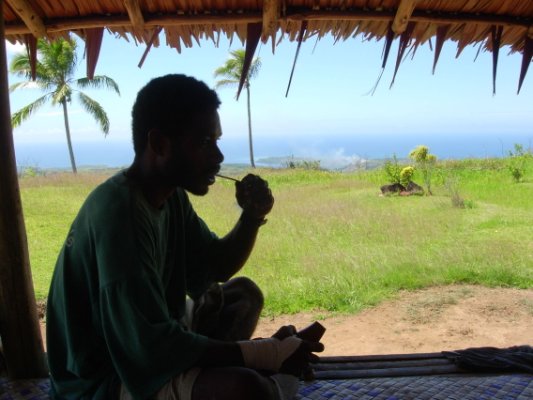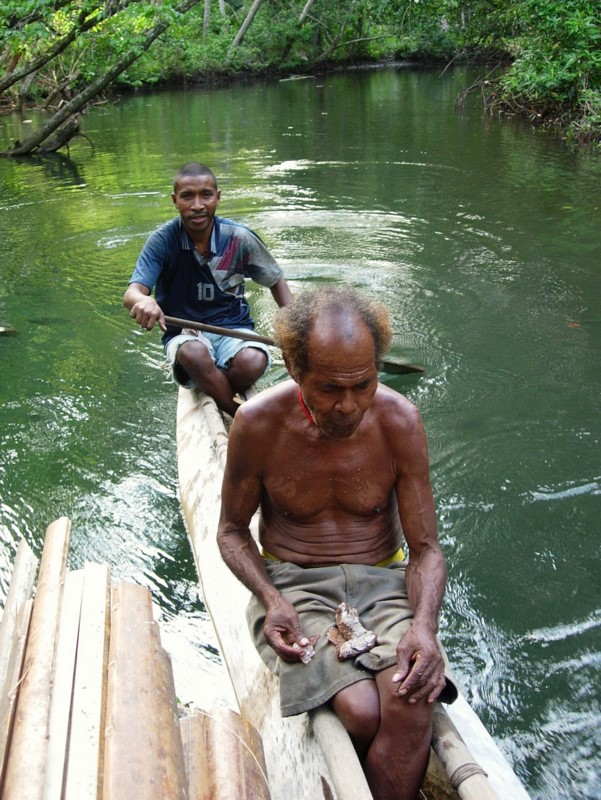From here we are going to follow a path down towards the sago forest where Erwatius and the others are working, and it will take us two hours or so. We say good by and head down through forest and gardens. We stop at an abandoned house and Benson climbs a palm tree and cuts down a few coconuts. Very refreshing, and the flesh is good too. We continue down through the rainforest, which is dense, and the path is steep at many places. It strikes me, as it has done before, that walking in a rainforest is to be in a small world. The vegetation blocks any view, and the only animals you see are ants and the occasional parrot or hornbill. It's very quiet and peaceful, and I'm glad I have a guide to find the way.
We find the three Kofure men by a little stream, and they have produced quite a pile of wall and floor materials. They have taken the stems of the enormous sago fronds, cut them in lengths of a couple of meters, and then split them in two. I recognise them from the floor in the guest house where I'm staying, and from porches and walls in every house in the area. So this is how they are made!
We all have a major coconut break when they are finished working. Dudley disappears up in a tree that must have been the highest around, and in a short while ten nuts are thumping down by our feet. Ilford and the others teach me how to open them, so here is my first attempt:
A stick sharpened in both ends has been put firmly into the ground, and I force the fruit onto it to break the soft bark. One has to use just the right amount of force - too hard and the core will break and the milk run out. I manage to break it, of course, but they give me a second try. Better this time, and the nut is free. With the bush knife I open it on top and can drink my refreshing reward. Dudley has sliced a piece of the outer shell to use as a scoop for the flesh. A sharp, oval little tool that easily scrapes clean the inside of the nut. Very efficient.
The canoe is placed a bit further down, so we carry the sago materials along the stream, which gets wider for every step. We pass a family who is making sago - that is they are extracting a powder from the trunks which they use to make the doughy substance they call saksak, or sago. This is important staple food in most of PNG, and since they have already baked some of it, Erwatius gets a small stack of it to bring along.
Benson and I help out with the paddling on the way back, first under the towering canopy over the long river-like inlet, and then on to the fjord. We're at the very end of it so this will take while. By Sefoa we pass two big canoes full of people who are cheering and laughing. Dudley tells me that it is the paddling waitman who is the object of the comments. I'm flattered.
As we approach Kofure, we pass another canoe - this one is staked by Aide, a fifteen year old Kofure girl, and she has a brother of three sitting on the platform. Behind them the green fronds of the banks are shifting to gold; the afternoon is turning into evening. We have timed our return well, and now I'm looking forward to dinner. What a great day!


